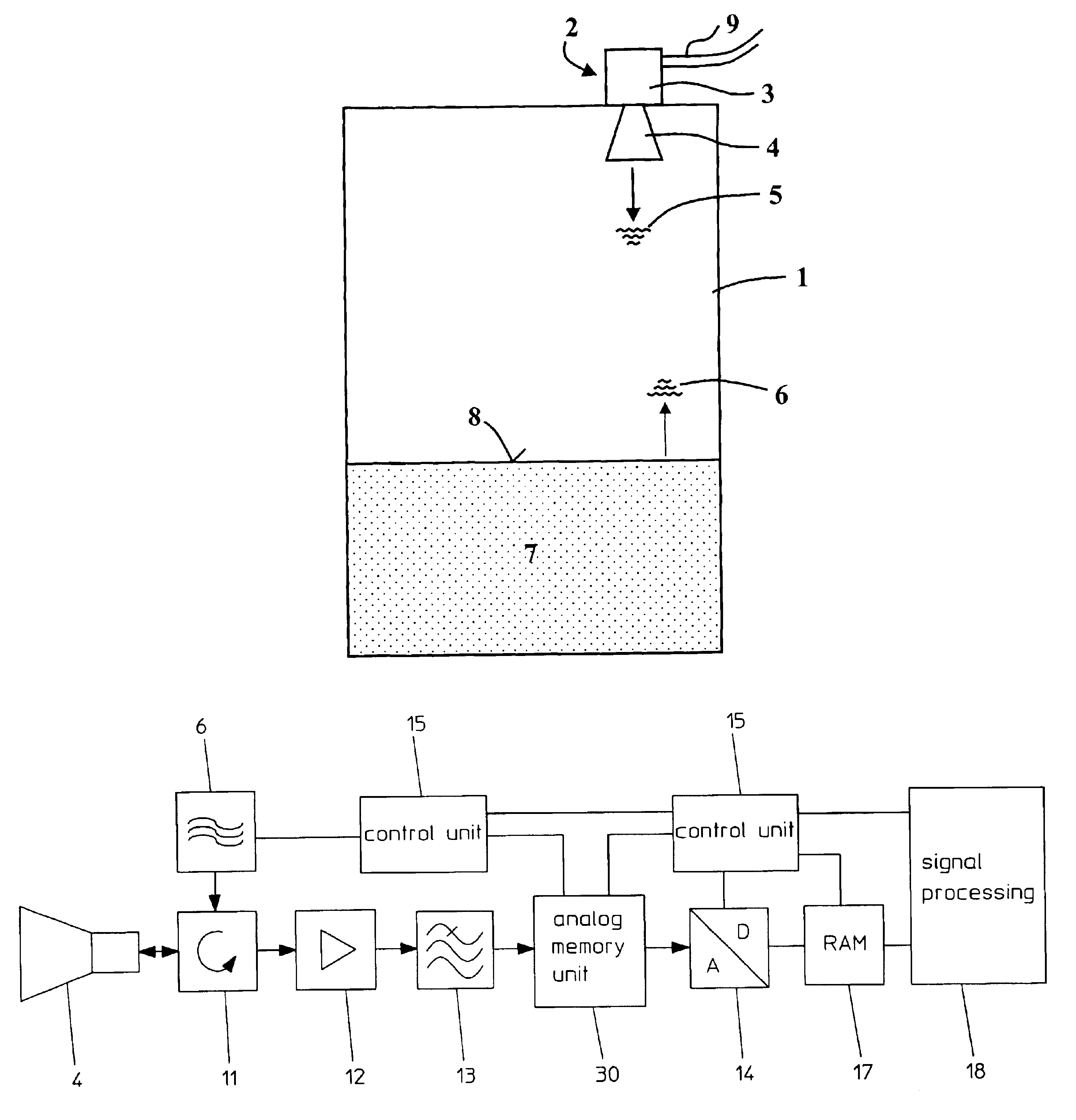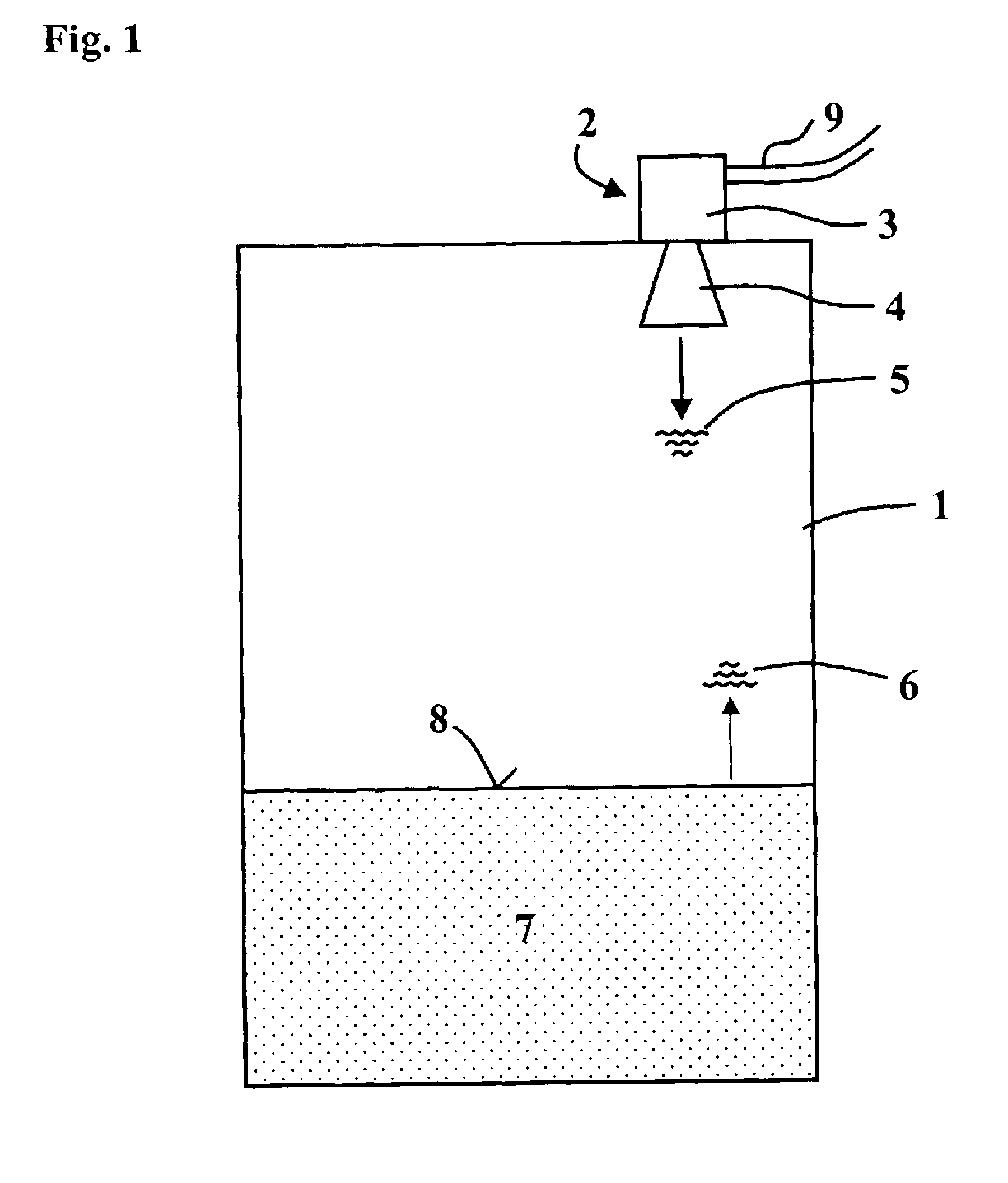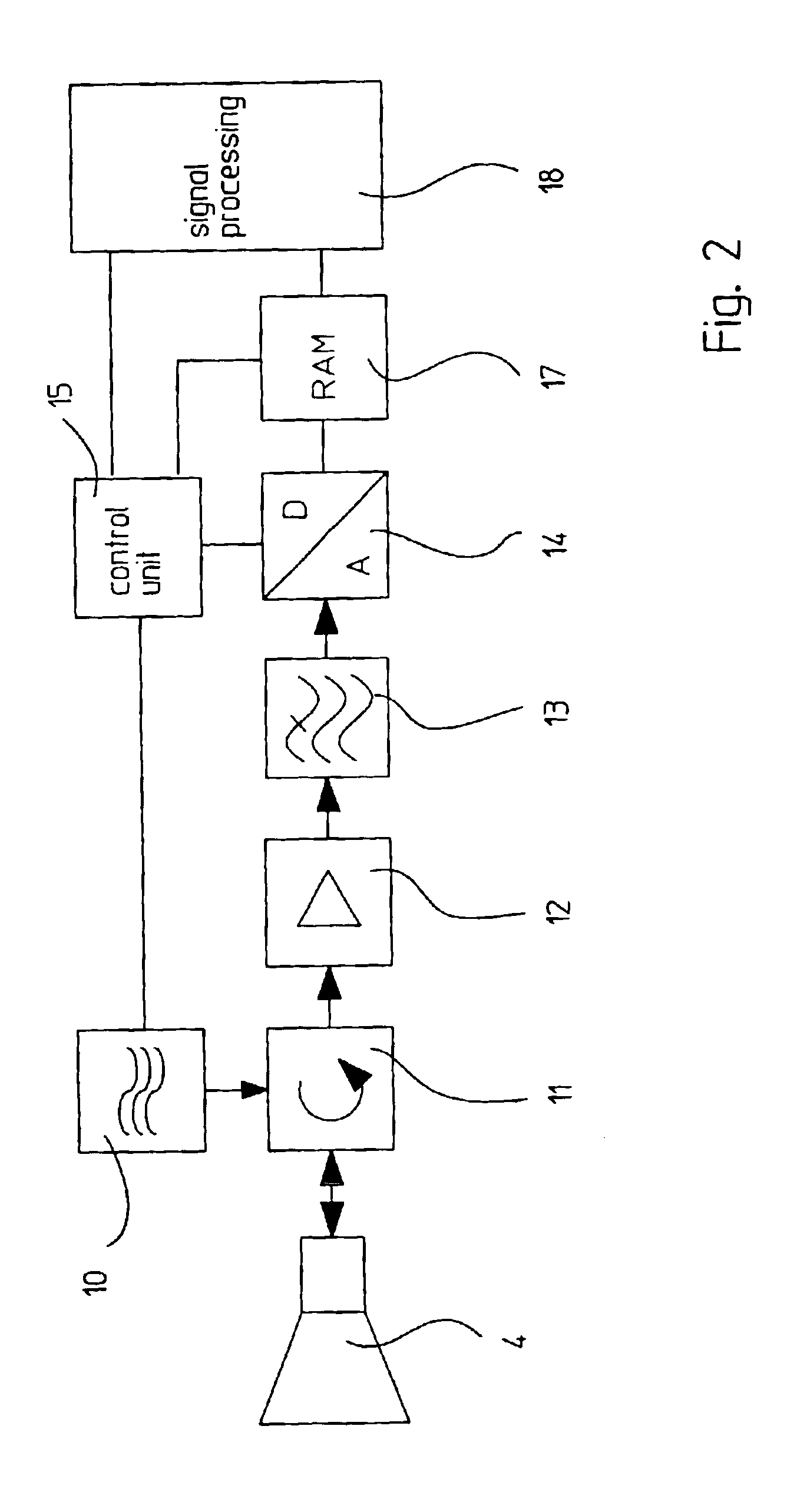Method and apparatus for directly digitizing microwave signals
a microwave signal and microwave technology, applied in the field of direct digitization of microwave signals, can solve the problems of reducing the reproducibility and accuracy of output signals, affecting the reproducibility of output signals, and requiring a lot of test effort, so as to reduce the number of analog circuit components in the device of the mentioned kind
- Summary
- Abstract
- Description
- Claims
- Application Information
AI Technical Summary
Benefits of technology
Problems solved by technology
Method used
Image
Examples
Embodiment Construction
[0040]With reference to FIG. 1 and FIGS. 6-9, the principle working method and the principle structure of a filling level measurement device will initially be explained. As can be seen from FIG. 1, in the cover zone of a receptacle 1, a filling level measurement device 2 is mounted, that is composed of an electronic unit 3 and a horn antenna 4. The filling level measurement device 2 is connected with a remote control panel or such like via a two-wire loop 9. Via said two-wire loop 9, which is in particular configured as a 4-20 mA two-wire loop, ensues the communication, as well as the energy supply of the filling level measurement device 2. In the electronic unit 3, microwave pulses are generated and radiated via the horn antenna 4 in the direction of the bulk product 7 present in the receptacle 1. The microwave pulses 5 are reflected at the bulk product surface 8, and are again received by the horn antenna 4 as an echo signal 6.
[0041]The generation of microwave pulses 5 or pulse pa...
PUM
 Login to View More
Login to View More Abstract
Description
Claims
Application Information
 Login to View More
Login to View More - R&D
- Intellectual Property
- Life Sciences
- Materials
- Tech Scout
- Unparalleled Data Quality
- Higher Quality Content
- 60% Fewer Hallucinations
Browse by: Latest US Patents, China's latest patents, Technical Efficacy Thesaurus, Application Domain, Technology Topic, Popular Technical Reports.
© 2025 PatSnap. All rights reserved.Legal|Privacy policy|Modern Slavery Act Transparency Statement|Sitemap|About US| Contact US: help@patsnap.com



